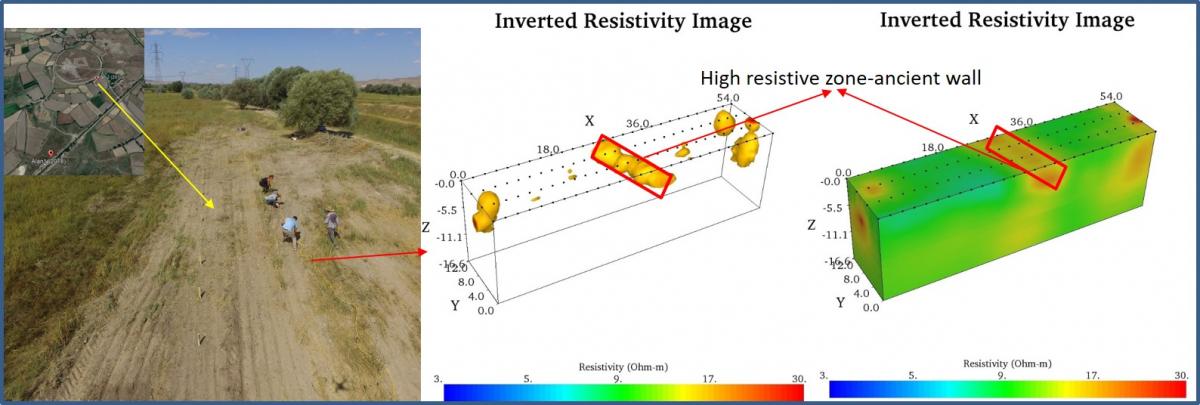- Office Hours: M-F 8:30 AM - 5:00 PM
The purpose of the study was to help ongoing excavations at the Kültepe Archeological Site. By using, geophysical measurement method of Electrical Resistivity Tomography (ERT), the goal was to find possible structural extensions or new remains.
The site of Kültepe was the capital of the ancient Kingdom of Kanesh and center of a complex network of Assyrian trade colonies in the 2nd millennium B.C.. Kültepe was a key center of culture and commerce between Anatolia, Syria, and Mesopotamia by the end of the 3rd millennium B.C.—and especially during the first quarter of the 2nd millennium B.C.. It is located 20 km to the northeast of Kayseri. (Reference: The United Nations Educational, Scientific, and Cultural Organization)
We used a SuperSting® R8 with a SwitchBox112™ connected to AGI Passive Resistivity Cables. The electrodes were arranged in a true 3D grid and the data was inverted using EarthImager™ 3D. There were two resistivity survey sites, one named "Alan 1", and another named "Alan 2".
At Alan 1, we used 2m of electrodes at 2m line spacing. There were 28 electrodes at 2m electrode spacing on the X direction and 6 electrodes at 2m electrode spacing on the Y direction—making for a total of 168 electrodes on a flat surface at 54x10m (total 540 m2). The measurements were performed using Pole-Dipole arrays. EarthImager™ 3D processed and inverted the 2,818 data points in 2 minutes and 18 seconds on a 64bit Windows 10 Pro operation system with i7-8850H CPU at 2.6Ghz processor.
At Alan 2, we used 2m of electrodes and 4m line spacing. There were 28 electrodes at 2m spacing on the X direction and 4 electrodes at 4m electrode spacing on the Y direction—making for a total of 112 electrodes at 54x12m (total 648 m2). The measurements were performed using Dipole-Dipole and Pole-Dipole arrays. EarthImager™ 3D processed and inverted the 4,346 data points in 4 minutes and 11 seconds on a 64bit Windows 10 Pro operation system with i7-8850H CPU at 2.6Ghz processor.

Above, you can see a high-resistive zone highlighted in the 3D inversion results. The ground truth of this high-resistive zone was confirmed as an ancient wall after excavation.

Above, you can see a high-resistive zone in the middle of survey area. The ground truth of this high-resistive zone was confirmed as an ancient wall after excavation.
Data courtesy of: Ankara University Geophysical Modeling Group
